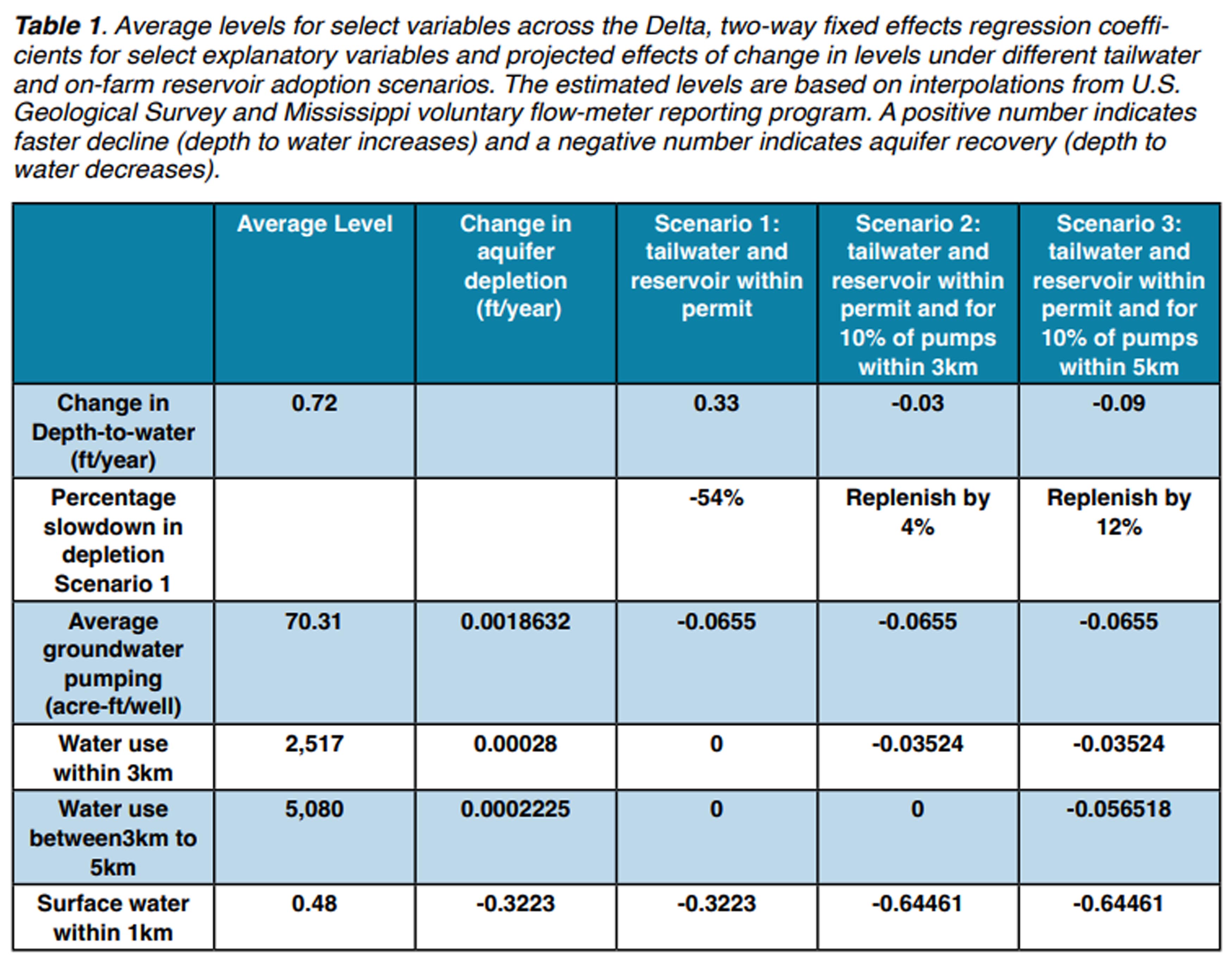Research Project
And who's my neighbor? One with On-Farm Water Storage might be a real-life Good Samaritan!
Investigators: Nicolas E. Quintana Ashwell, Amer Al-Sudani, and Drew M. Gholson
Date: 2022
Project Summary
The use of alternative sources of water in the context of a declining aquifer has alleviating effects through substitution and interception. Surface water substitutes the amount of groundwater that would otherwise be pumped from a well. As groundwater slowly flows through an aquifer (from the rivers to the "cone of depression," for example), the interception occurs when pumping hinders the ability of other wells to replenish.
This article provides further insight into the ripple effects of employing surface water sources for irrigation in the Delta. This example illustrates the positive external effects of establishing on-farm water capture and storage infrastructure.
The calculations are based on data described in "Exploring the role of off-season precipitation and irrigation water use in inter-season changes in well depth to water" (page 44 in this newsletter) that estimates groundwater pumping for 17,467 wells. That article employs projections of aquifer water elevation and groundwater use between the years 2014 and 2017.
A regression analysis accounting for field-specific and year-specific fixed effects (two-way fixed effect regression). This method controls for any variable that is particular to a field (and does not change over time) or something particular to a given year that affected all wells. Table 1 summarizes the main variables and the regression coefficients associated with water use and presence of surface water installations (either pumping from a stream, ditch or reservoir). In this type of regression, the coefficients are interpreted as the change in depth to water associated with a unit change in the explanatory variable.
The first scenario evaluated estimates the localized effect (on a given well, all else equal) of establishing tailwater recovery and reservoir infrastructure in association with the existing irrigation well (Scenario 1). This incorporates the standard NRCS tailwater and reservoir plan for a 160-acre field, which involves approximately 12 acres of added infrastructure capable of providing 50% of irrigation needs with a 10% chance that surface water would be insufficient for 80 irrigated acres (in which case supplemental groundwater may be pumped). This infrastructure is capable of slowing-down change in depth to water by an average of 54% (to about 4 inches per year). This result is obtained from estimating the reduction in groundwater use that is substituted with surface water and the retention of off season rain and tailwater effect captured by the "Surface water" indicator variable effect.
Scenario 2 adds to Scenario 1, the establishment of similar water infrastructure for 10% of all wells within a 3km (little less than 2 miles) radius. This added infrastructure reverses depletion and a localized 4% repletion results. This is the good neighbor effect that can also be interpreted as a network effect. Because these onfarm investments have positive effects outside the farms where they are established, this practice becomes an attractive target for public policy or funds. It could, furthermore, be an avenue for collective action from private farmers who are, through this infrastructure, able to look at the issue of irrigation water from a basin scale rather than a field-level scale-possibly allowing cooperation or cost-sharing as one farmer's runoff could become another farmer's irrigation water. The third Scenario further illustrates the impact from even more distant neighbors. In a future where more water use and crop productivity are expected, and needed, the ability to capture, store and re-use off-season precipitation could be a critical component of the agricultural production system in the Delta. While earth-moving and the land-cost of establishing the foot print of tailwater and reservoirs is high; the cost of retiring irrigated land in the future due to depleted aquifers could be much higher.
Project Photos

- Topic:
- Irrigation
Find Research
By Crop Type
By Topic
Contact NCAAR
General Information
Kaye Sullivan
vfs23@msstate.edu
662.390.8510
F:662.390.8501
Showcase Demo
Drew Gholson, Coordinator
drew.gholson@msstate.edu
662.390.8505
Himmy Lo
himmy.lo@msstate.edu
662.390.8509

